Over the last eight years, the cloud computing market has been growing at an exponential rate, and some cloud service providers have been gaining power or emerging under these conditions. For this article, we compared Amazon Web Services (AWS) vs. Oracle Cloud platform — the undisputed market leader according to Gartner’s Magic Quadrant for Cloud Infrastructure as a Service vs. a promising niche player.
Drive your digital transformation to the next level with our world-class cloud development services
Figure 1. Gartner’s 2019 Magic Quadrant for Cloud Infrastructure as a Service
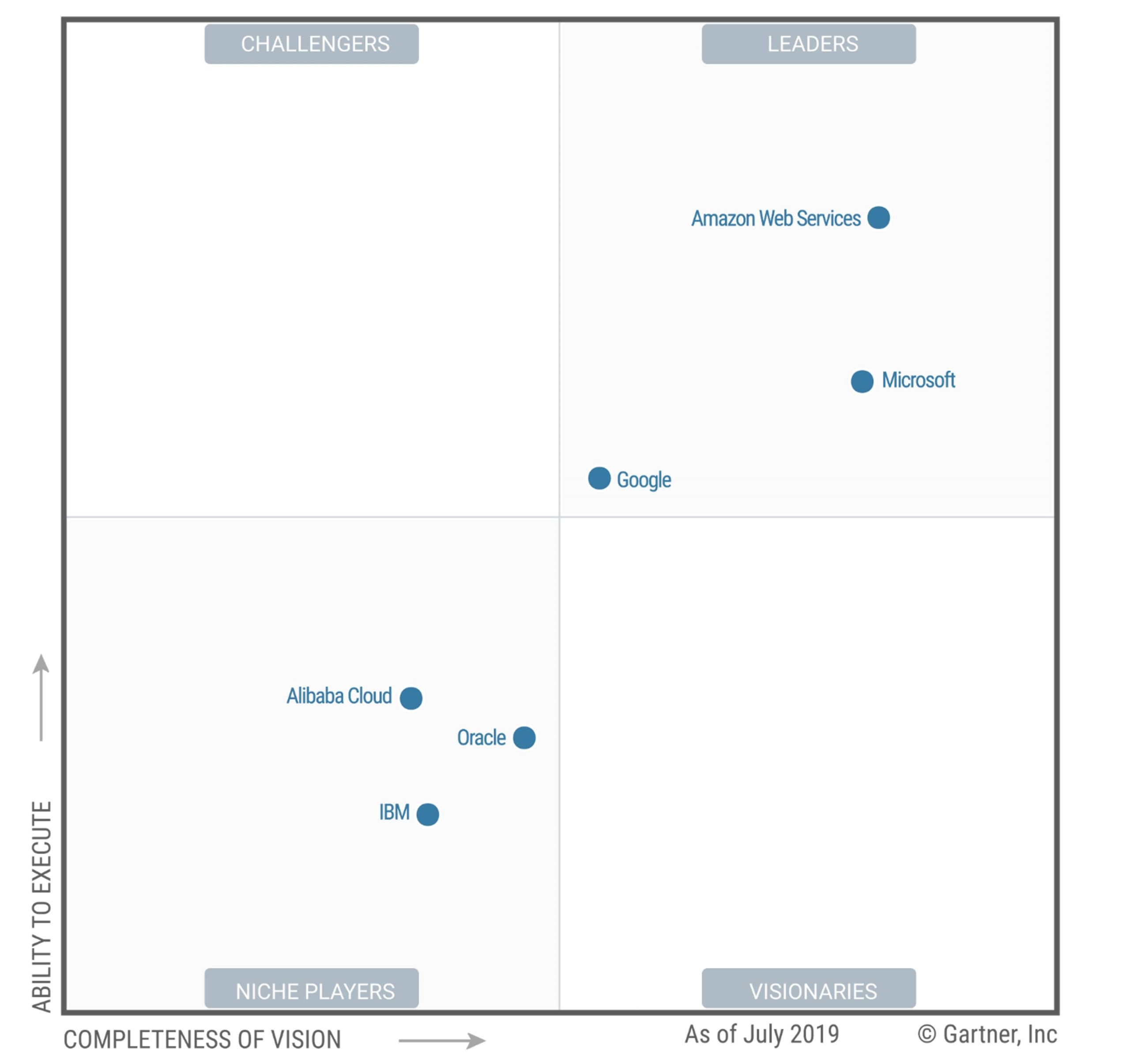
Source: Gartner (July 2019)
In such a manner, we would like to compare completely different solutions to figure out the benefits and drawbacks of each kind. Also, it will help us understand the ways in which businesses can make the best use of them. However, we base this comparison not only on Gartner’s expert opinion of the strengths and drawbacks of Amazon AWS and Oracle Cloud Platform but also on their users’ reviews.
Amazon Web Services

Let’s begin with the longstanding leader — Amazon Web Services for further AWS vs. Oracle cloud comparison. Maybe its dominant position is the reason why lots of people consider this name to be the synonym for cloud technologies.
AWS, Amazon’s subsidiary, entered the market in 2006, and since then it has been rapidly gaining ground. As of year-end 2017, its annual revenue amounted to $17.5 billion, which is 43% higher than n 2016. So, let’s figure out why millions of companies opt for this cloud platform.
AWS’s Capabilities
This cloud solution is considered to suit any case that seamlessly performs in a virtualized environment. It integrates powerful IaaS and PaaS capabilities and provides a number of products and services, such as:
- Computing that includes Amazon EC2 virtual servers, Amazon Elastic Container Service, Amazon EC2 Auto Scaling, AWS Elastic Beanstalk for web apps, AWS Lambda that adapts code to events, VMware Cloud and other functionality
- Storage that supports scalable, block, managed, hybrid and low-cost archive storages — S3, EBS, Elastic File System, Storage Gateway and Glacier, respectively, and various data transport functionalities
- Databases — Aurora, RDS, Redshift, DynamoDB, etc.
- Migration tools
- Content delivery and networking — Amazon VPC, CloudFront, API Gateway, Route 53 and other
- Developer tools — AWS Code Build, CodePipeline, CodeDeploy and more
- Management tools that enable the monitoring of workloads, configuration, user activity tracking, cataloging, security and performance optimization and other important processes
- Media optimization that is primarily focused on the improvement of video-related functionality
- Security that governs different levels of protection, identity and compliance management
- Analytics and business productivity
- Mobile services
- Other services
Also, AWS provides support for up-to-date technologies, such as the Internet of Things, machine learning, augmented reality and virtual reality.
AWS’s Advantages
The fact that AWS has millions of successful use cases under its belt, as well as its consistently successful financial performance, attracts an increasing number of companies. The wide diversity of its functions and capabilities makes it a one-stop shop for a great number of companies. Below is the list of key AWS’s advantages that make it the choice of millions of businesses:
- Continual portfolio development. AWS provides a wide range of services and acquisitions, which doesn’t stop the vendor from consistently enriching it with new offerings. In such a way, PaaS was once added to an IaaS offering. In the meantime, the cloud vendor steadily enhances its services with new functionality and capabilities, while it places special emphasis on integration and management.
- The widest range of capabilities. AWS provides the largest variety of functions and capabilities if compared to other solutions, which makes it a sure option for a lot of market players.
- Streamlined software implementation, migration and management. AWS has an immense ecosystem of consulting partners and independent software vendors, which provides its customers with AWS-preintegrated SaaS solutions, guaranteed technical support and licenses.
- Secure and compliant solutions. Both companies that need to perform certain business processes in the cloud and those that require migration of their traditional data centers to the cloud opt for AWS. It allows them to implement mission-critical applications that run safely and smoothly.
- Polyglot technical support. AWS operates all over the world, and the vendor backs up its services with extensive multilingual customer support. Moreover, the list of languages constantly grows.
- Extensive data center geography. Multiple small data centers are scattered across the globe, which reduces the risk of local incidents and enhances service localization.
- A pay-as-you-go fee model. AWS allows its customers to minimize upfront investments and layout expenditures as they grow while eliminating the need to purchase superfluous products and services.

AWS’s Disadvantages
As with any other solution, AWS cannot go without certain limitations that can make customers decide on competitive cloud platform s. They are the following:
- Complicated service implementation. The reverse side of the coin, various AWS services not only provide businesses with advanced capabilities but also require considerable expertise for their implementation and support. Also, it demands companies to be well-versed in service updates and innovations. Sometimes, it is tough even on the technology-enabled companies and AWS partners, not to mention managed services providers. However, there is also a bright side: customers can be assured that these managed services providers apply AWS technologies properly, as they have already earned this status.
- Off-radar updates and modernization. AWS used to update its services so that the general audience is in the dark about it, which is why significant modifications may go unnoticed.
- Insufficient cooperation with open-source communities. AWS has been creating an increasing number of open-source solutions, while not offering enough support to open-source communities. However, there is something to say in defense of the vendor: recently, it has begun to apply just the opposite approach.
- Quite a high price. There is a widespread belief that an AWS-based solution comes at a reasonable price. However, the price may not be as reasonable as it appears: the creation of a custom solution that meets all specific requirements may cost a bundle.
- Database compatibility issues. Amazon’s Aurora, Redshift and DynamoDB are compatible only with AWS.
Oracle

A newcomer in the market, Oracle Cloud cannot boast millions of users across the globe and top positions in the rankings of cloud service providers. However, in 2015, this powerful producer of software and server hardware launched the public IaaS offering that was later modified. Now it seems that Oracle is gathering steam and is set to become a leader in the future.
Oracle’s representatives like to trumpet its superiority over AWS in a variety of aspects. For instance, in 2016, they stated that “Amazon is 20 years behind Oracle in database technology.”
So, let’s gain some insight into the essence of Oracle Cloud computing platform, its capabilities, pros and cons to make a final Oracle vs. Amazon cloud comparison.
Oracle’s Capabilities
Oracle combines IaaS, PaaS, SaaS and DaaS solutions and provides a wide range of cloud services and products, such as:
- App development that includes container, mobile, blockchain, database, IoT, Java and other cloud services
- Business analytics that embraces autonomous analytics, business intelligence, Big Data, data visualization and other cloud services
- Cloud for customer services
- Cloud infrastructure
- Content and experience management
- Data integration
- Data management
- Enterprise integration
- Security solutions that provide compliance and safety
- Systems management that enables the administration of the whole cloud platform
Oracle’s Advantages
As you can see, Oracle Cloud, as well as AWS, provides a wide range of services and products. Moreover, the vendor provides its cloud services as an integrated set, which eliminates the need to purchase third-party solutions. And one of its advantages, probably, the most valuable one, derives from it:
- The integrated stack of technologies. The vendor streamlines cloud-related business processes by delivering apps, middleware and database as a unified whole instead of turning to the patchwork of diverse third-party services. So, customers do not need to adopt other vendors’ solutions as Oracle can meet all of their requirements. This results in a user-friendly environment. However, only an all-inclusive Oracle ecosystem allows users to enjoy its capabilities to the fullest.
- Advanced technologies. Oracle relies its cloud on cutting-edge technologies, which makes it much faster and much more performant than its competitive solutions, especially when it comes to high-capacity apps. Some of its fans even consider that the Oracle Cloud is four to five times faster than AWS.
- Easy customization. The cloud enables flexible tuning to make it meet the specific company’s needs. However, to meet the company requirements as much as possible, you might still need additional Oracle cloud components.
- Powerful DaaS. The vendor’s database expertise allows it to bridge database services with PaaS and IaaS.
- Hyperscale architecture. An easily scalable elaborate infrastructure allows companies to expand their IT landscapes as they grow, which is essential for large enterprises.
- Focus on specific use cases. In the highly competitive cloud computing market, Oracle has occupied its niche by creating solutions that meet the need of a specific group of customers. That allows the vendor to concentrate on its key capabilities instead of riding off in all directions.
- Cost-efficiency. The cloud’s price is quite reasonable, especially that of storage capacities. But, naturally, the final cost depends directly on the project’s requirements.
- Helpful customer support. The department addresses customer issues effectively and in a timely manner.
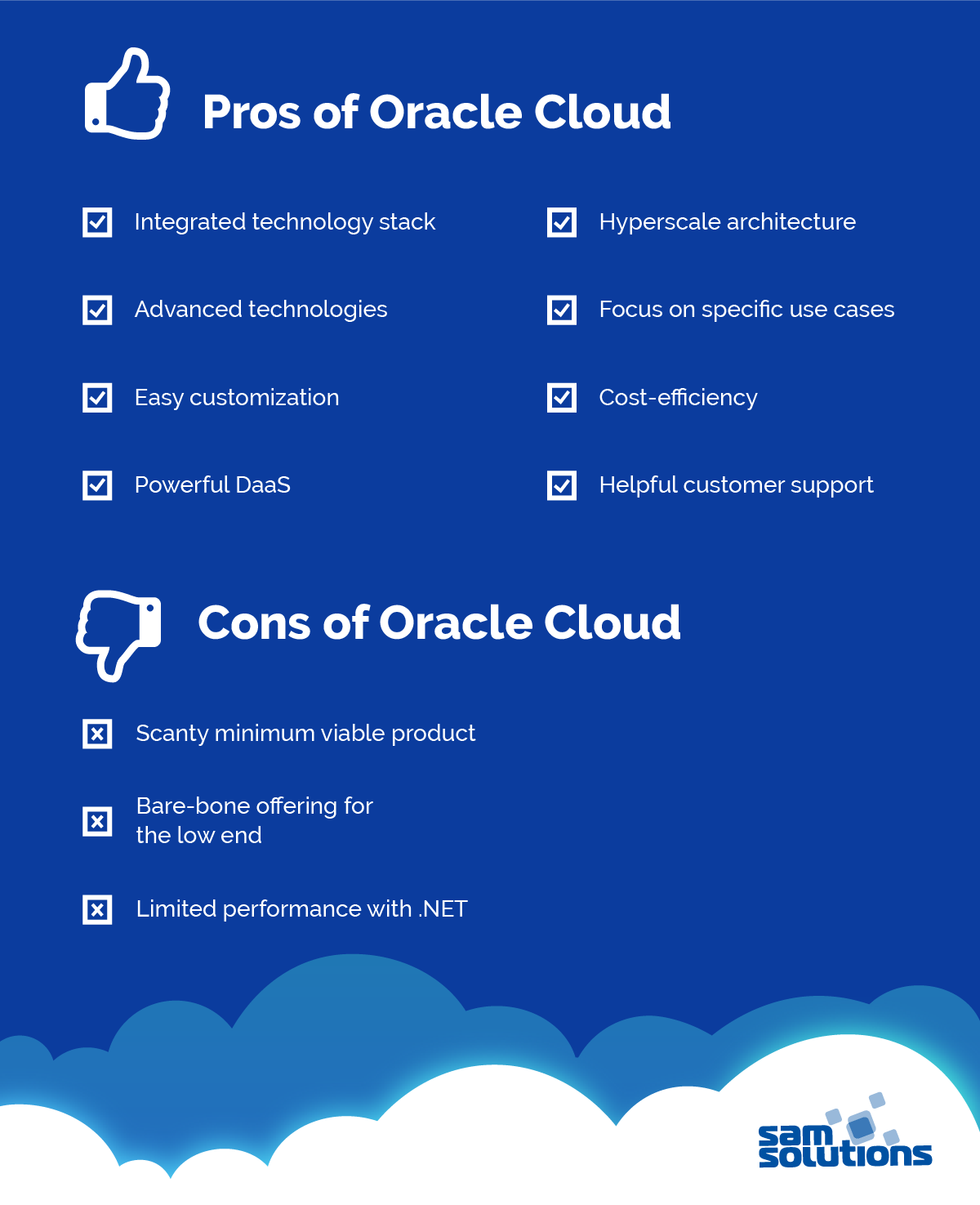
Oracle’s Disadvantages
Despite apparent strong points, Oracle cloud solutions have certain drawbacks, which is why a number of companies may opt for another cloud platform.
- Scanty minimum viable product. Although the vendor provides all the services and products required out-of-the-box, this offering includes only bare-bone solutions. Moreover, its components are not sufficient even for companies that need only the minimum, let alone those businesses that require a comprehensive platform.
- Bare-bone offering for the low end. Oracle is focused on the high end, while its offering around the low end is quite poor and limited.
- Limited performance with .NET solutions. Some users report limited capabilities for .NET framework.
Real-Life Use Cases
To understand how these two platforms work in real life, let’s go through some of the real-life examples that are based on our experience.
Amason Web Services
SaaS Platform. The SaM Solutions team developed a powerful SaaS platform that allows users to interact on a company’s website to increase brand awareness and customer loyalty. Based on AWS, the solution enriches the end customer’s website with interactive customer experience so that a company can make the most of the recommendation and influencer marketing.
Our team performed platform development, its further enhancement and support.
Location-based marketing platform. Our team created a solution that enables the location-dependent community and marketing campaigns. The platform brings together client applications and the backend to implement location-dependent marketing activities, such as geography, time, and content selection and targeting through mobile apps.
The SaM Solutions team provided platform development, QA, maintenance and support.
The Comparison of Oracle Cloud and Amazon AWS
Previously, we checked out the specifics of the two solutions and the advantages and disadvantages of both. To decipher the difference between Amazon AWS and Oracle Cloud platform, we have compiled a table that compares their most critical characteristics and features.
Table. Oracle Cloud vs. AWS Platform Comparison
| AWS | Oracle Cloud | |
| Position in the market | Longstanding leader, the biggest market share | Newcomer, small market share |
| Cost | High, depends on each specific configuration | High, it depends on each specific configuration. However, considered to be lower than that of AWS |
| Payment model | Pay-as-you-go, option to add required services as they grow | Hard-sell, forcing customers to purchase the maximum set of services at once. Very expensive licenses when customers turn to competitive solutions |
| Offering adequacy | A wide diversity of services | The bare-bone solution with minimal out-of-the-box functionality |
| Cloud fundamentals | A broad range of services and products that meet any requirement and enable a flexible and robust cloud environment | Cloud products and services are provided as a self-contained integrated stack |
| Technology | Relies on advanced technology. Database compatibility issues, limited database performance if compared with Oracle | Relies on advanced technology. Oracle representatives claim its database technology to be 20 years ahead of that of AWS. |
| Scalability | Near-unlimited scalability | Near-unlimited scalability |
| Customer support | Multilingual, localized support that relies on a wide network of partners and managed services providers | Insufficient support of enterprise-level customers; lack of managed services providers |
We develop innovative cloud-based solutions for clients around the world
What to Choose: Oracle Cloud vs. Amazon AWS
As you can see, choosing between Oracle Cloud and Amazon AWS is not that difficult if a company thoroughly understands its own requirements and capabilities. Although the two vendors operate in the same market, they have quite different cloud platforms to offer. However, the options are not limited with these two powerful platforms: for instance, we have created SaM CloudBOX PaaS — a solution that enables easy and streamlined software development.
If you are still in doubt about the platform that will suit your demands better — contact us. SaM Solutions has extensive experience in cloud-based development in numerous industries. In addition to our robust PaaS, we provide AWS — and Oracle Cloud-based solutions for a wide variety of businesses — for large enterprises, small and medium companies, and for startups.



























 5 Reasons Why Your Business Needs a Mobile eCommerce Application
5 Reasons Why Your Business Needs a Mobile eCommerce Application Using Salesforce to Improve Your Sales Pipeline: Five Tips
Using Salesforce to Improve Your Sales Pipeline: Five Tips Cross-Platform Mobile Development: Five Best Frameworks
Cross-Platform Mobile Development: Five Best Frameworks How to Develop Custom Accounting Software
How to Develop Custom Accounting Software 10 Best Web Development Frameworks in 2024
10 Best Web Development Frameworks in 2024

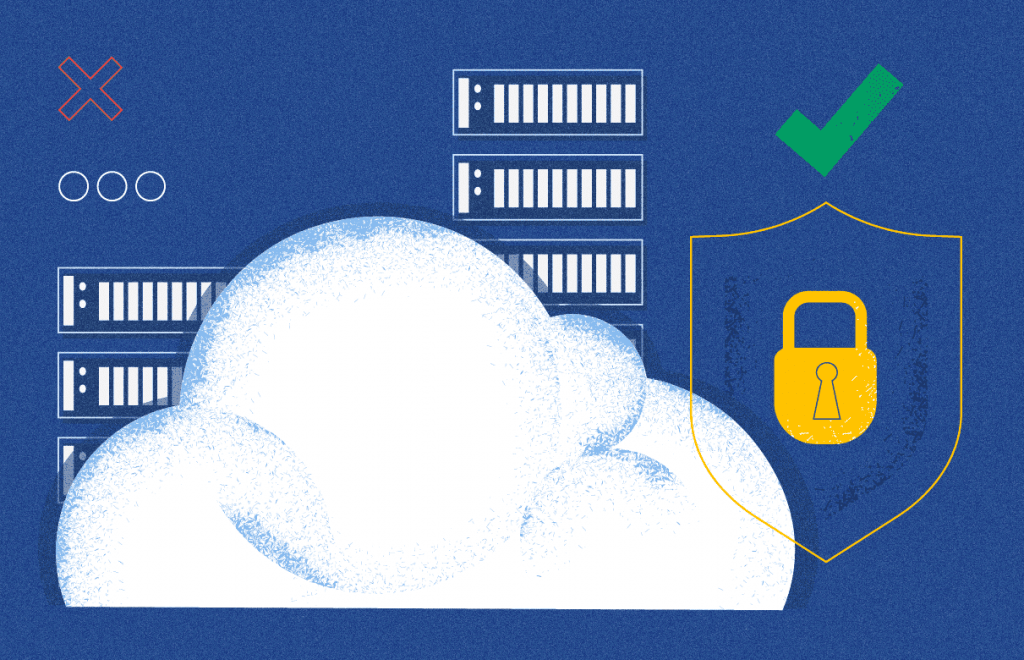

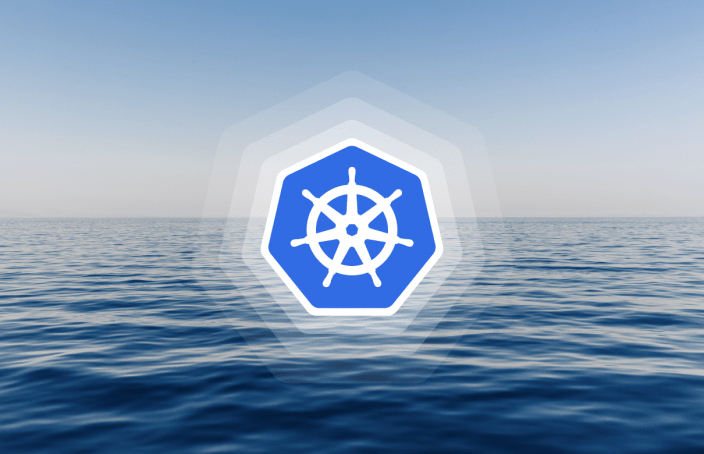



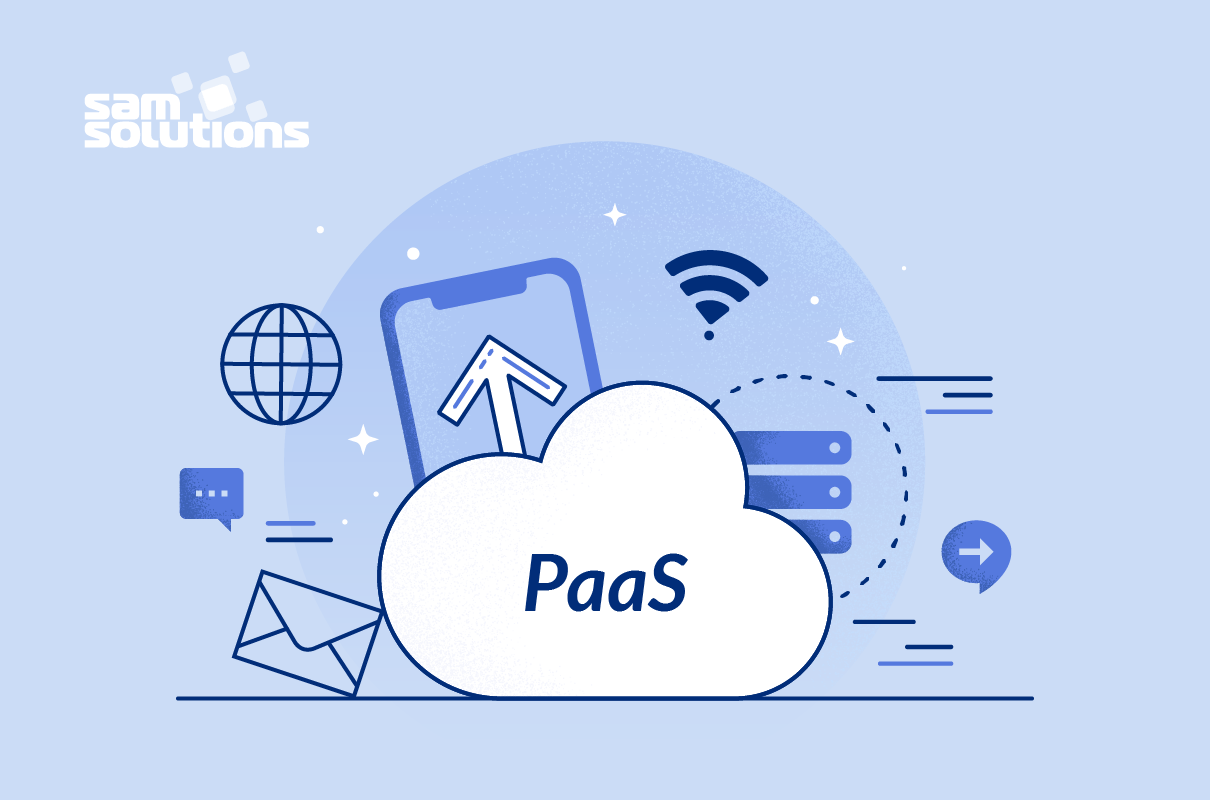




 Top 30 Ecommerce Tools to Elevate Your Business in 2024
Top 30 Ecommerce Tools to Elevate Your Business in 2024 5 Best Tools to Improve Embedded Software Testing
5 Best Tools to Improve Embedded Software Testing Why React and Node.js Are the Top Technologies for Creating High-Performance Web Apps in 2024
Why React and Node.js Are the Top Technologies for Creating High-Performance Web Apps in 2024 10 Best IoT Platforms for 2024
10 Best IoT Platforms for 2024
Thanks for informative blog. Where else could I am getting that kind of info about Amazon AWS and Oracle Cloud Platform written in such an ideal manner?
I have a undertaking that I am just now running on, and I’ve been on the glance out for such information.
Thanks for excellent info I used to be in search of this information for my mission.
Thanks for the marvelous posting! I genuinely enjoyed reading it, you are a great author. I will make certain to bookmark your blog and will come back from now on. I want to encourage yourself to continue your great job.
It’s hard to find educated people in this particular subject, however, you seem like you know what you’re talking about! Thanks
A fantastic read.
I will definitely be back.
Hurrah, that’s what I was looking for, what a stuff!
Present here at this weblog, thanks admin of this website.
AWS is a longstanding market leader, while Oracle is a smaller but promising cloud vendor. You should decide what you need for your business: a complex and expensive platform with a wide range of capabilities and global presence, or a less complicated solution with fewer out-of-the-box products but at a reasonable price.
What I like about Oracle are the multiple integration opportunities you can use to connect your apps and systems (ERP, CRM, CX) with the cloud platform and get valuable data insights.
Since the cloud computing market is growing at a high rate, all the leading cloud vendors are continuously developing and improving their products. For me, it’s hard to compare AWS and Oracle because both platforms have their strong and weak sides. But I like your comparison.
Oracle Cloud infrastructure has been developing over years and today it’s a comprehensive platform with lots of benefits. Oracle offers secure computing, data storage and networking. Oracle’s AI- and ML-based analytics intelligence platform is also gaining traction.
As of now, the core advantages of AWS are usability, flexibility, scalability and security. Being a world leader in the cloud computing market, it is certainly a costly solution aiming at large companies.
Great posting friend. Will be back to read more.
I saw the Oracle CEO on tv saying their product is much more secure than AWS because the software that runs their system is seperated from the customer environment making it impossible to hack. I think security should have been mentioned in the article.
I just switched from AWS over to Oracle and there is no comparison. Much of what you state about Oracle is factually incorrect and you could have seen that if you had just gone to their cloud website. What I have learned about Oracle Cloud. For IaaS they have the fastest, most performant cloud I have ever seen, including Bare Metal options. All pay by the HOUR. There is no high-pressure sales tactics. I never even talked to a Sales Rep. I did it all over the web. My IaaS bill was cut by 40% from AWS and I go 4-5x faster than AWS. Oracle’s storage prices are way lower than AWS. Oracle PaaS is totally different than other cloud providers. I would argue they are almost like SaaS. They are so easy to use it’s incredible has straightforward it is to use something like Analytic Cloud or Integration Cloud to get things done. Most clouds platforms just install a image on a linux vm and say, go log in a use that software we just gave you. Oracle does not do that. The PaaS is installed for you and you use it via a browser, you never even log-in to the linux envrionment that runs it. That’s why it’s more like SaaS really.
The best I can say is that Oracle designed it’s cloud around big companies, no little dev shops. They built in high performance, low costs, easy PaaS for big world-wide companies. I haven’t use their PaaS yet but our company plans to go to their SaaS offering called NetSuite to run our business systems.
Mark, thanks for your feedback! This article just expresses our point of view. Both Oracle Cloud and AWS have won numerous businesses, and that’s because they both have powerful capabilities that can meet the requirements of various companies. We’re happy that your Oracle experience is successful, but we’re sure that numerous AWS’s followers also consider AWS to fit the bill.